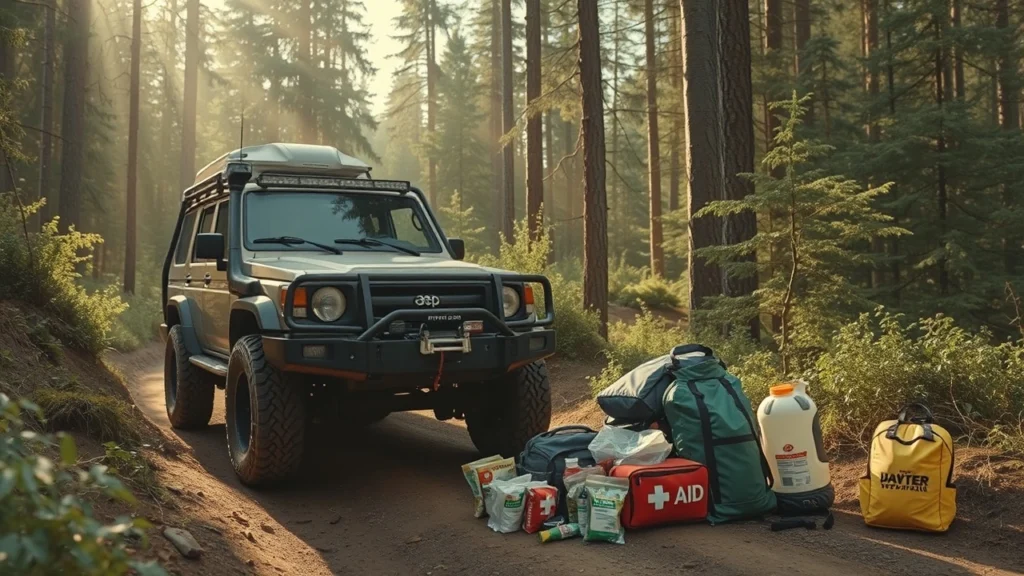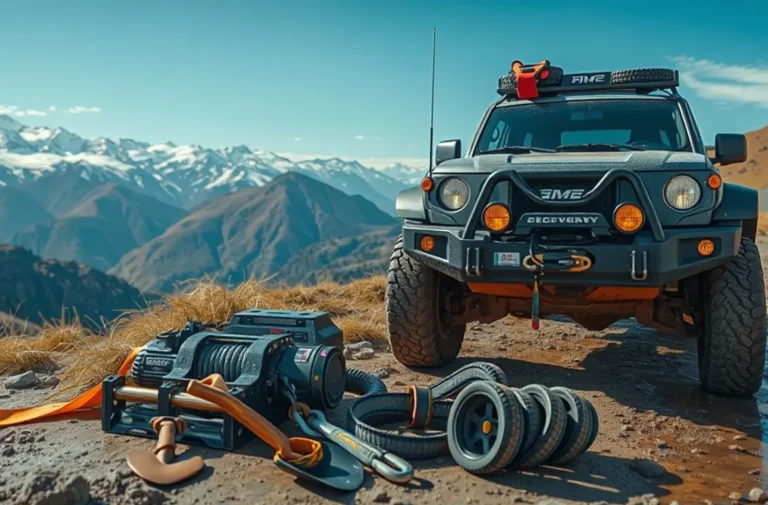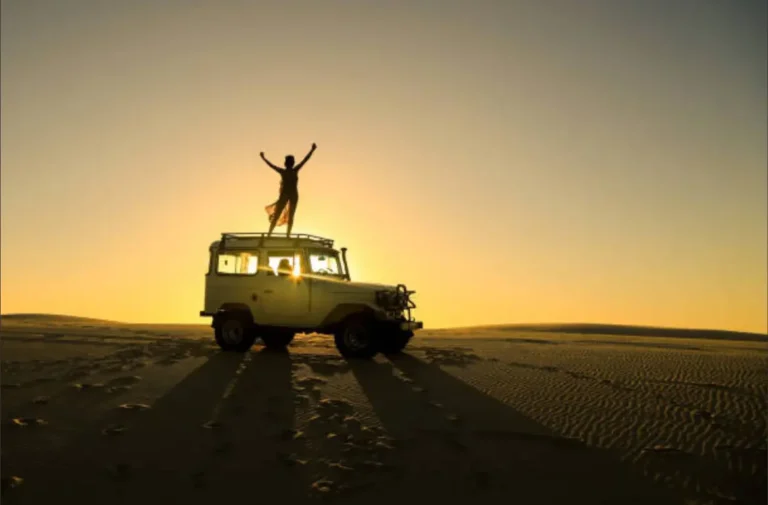Off-Road First Aid: Essential Skills for Adventures
Preparing for any trip means learning how to give Off-Road First Aid. The right skills and tools can save the day, whether a small injury or an emergency. This blog will discuss some important first aid off-road. so you’re always ready for the unexpected.

A safe and fun outdoor experience depends on adventurers learning first aid skills that work in the wild. People who like to go off-road can feel safer going on adventures if they know about and are ready for these risks.
Off-Road First Aid Basic Care
First, ensure safety before going on rough terrains and faraway trails. When you’re far from help, being ready for situations is essential. Having the right tools and a well-stocked first-aid kit can make all the difference when going off-road. Let’s make sure your gear can handle it.

- We recommend BZK-based wipes for antiseptic purposes, but alcohol-based wipes are also acceptable.
- Antibacterial cream or gel (like Bacitracin)
- Benzoin compound liquid (bandage glue)
- Different kinds of sticky bandages (fabric is best)
- Butterfly bandages and wound closure pieces that stick to surfaces
- Gauze pads (different sizes)
- Clean pads that don’t stick
- Medical tape (10-yard roll, at least 1-inch wide)
- How to treat blisters
- Taking ibuprofen or another painkiller
- Treatment for insect stings and itching
- To treat allergic responses, an antihistamine
- Splinter tweezers with a fine point
- Pins for safety
- A first-aid book or cards with information
Supplies and tools made just for vehicles
Your off-road car needs its own set of supplies and tools. If your car breaks down, have these things on hand:
| Item | Use |
| Tire repair kit | Fix flats without a spare. |
| Air compressor | Inflate tires on the go. |
| Jumper cables | Jump-start your battery. |
| Tow straps | Pull out stuck vehicles. |
| Multi-tool | Handle various minor repairs. |
| Flashlight | See in the dark, signal for help. |
| Duct tape | Temporary fixes on many surfaces. |
| Extra fuel | Avoid getting stranded without gas. |
These must-haves put safety first when you pack them. You can go off-road exploring without worrying because you know you’re ready for anything.
Most Frequent Off-Road Injuries and Emergency Steps
Off-road adventures can hurt you in ways you didn’t expect. The key is to act quickly. It can make a big difference to know what to do. Let’s look at some common accidents and what you should do immediately.

Cuts and Scrapes: How to Clean and Dress Them
Many people get cuts and scrapes Off-Road First Aid. Cleaning right away can avoid infections. Always have a first-aid kit with you.
- Wash the area with clean water.
- Use a clean cloth to pat dry gently.
- If you have antibacterial cream on hand, use it.
- Put a clean bandage or paper over it.
How to Stabilize Technique Fractures and Sprains
Broken bones and sprains need care to keep them from getting worse. It is very important to stabilize the damage. Don’t move the person unless you have to.
- Put pressure on the wound to stop the bleeding.
- Use a splint to keep the area from moving.
- If you can, keep the wound at heart level.
- Use ice to bring down the swelling.
- Get medical help right away from a professional.
Taking Care of Environmental Threats
Off-roading is one type of outdoor activity that can lead to strange events. To explore safely, you must know how to deal with natural risks. This includes being aware of and taking steps to prevent the dangers of extreme weather. Let’s look at some essential first-aid tips for dealing with problems caused by heat and cold.
How to Avoid and Treat Heat Stroke and Dehydration
Heat stroke is a serious illness that can occur on long off-road trips. To protect yourself, it’s important to stay hydrated and cool.

- Whenever you feel thirsty, drink water.
- Wear clothing that is light and airy.
- You can take breaks in the shade or make your own.
Tables show information clearly for people who want more details:
| If heat stroke hits: | Action to take |
| Move the person to a cooler place | Immediate rest is crucial. |
| Cool them down | Use water and fans. |
| Monitor body temperature | Seek medical help if it doesn’t drop. |
How to Treat Hypothermia and Frostbite When You’re Out in the Cold
There are risks in cold weather, such as getting chills or frostbite. Seeing and doing something early on can save lives.
The condition of reduced body temperature:
- Look for signs like shaking, being tired, or being confused.
- Slowly warm up the person.
- Stay away from hot baths and direct heat sources.
To freezing:
- Look for tingling and spots of white or grayish-yellow skin.
- Warm up slowly with your body heat. Do not rub.
- If the signs don’t go away, you should see a doctor.
Interior Design and Technology Highlights
Because off-roading activities are unpredictable, training and being ready is important. It is important to have a well-stocked First Aid kit, but it is also important to know how to use it. This section will discuss why off-roaders should get first aid training and how practicing drills can help them better respond to emergencies.

Certified Off-Road First Aid Users
Getting certified in Off-Road can make a big difference when something unexpected happens. Off-road courses usually cover the following:
- Controlling trauma
- Protective coverings and braces
- CPR techniques
- Taking care of stings and bites
These licenses give people the tools to stay calm and help others effectively. They can help someone who is hurt stay stable until help comes.
Mock Drills: The Training of Emergency Situations
Drills that aren’t real are like real emergencies. Off-roaders develop these skills through these drills:
- Quickly evaluating the victim’s health
- Using Off-Road correctly
- Implementing emergency plans
Regular drills help people remember what they’ve learned so that it comes naturally when they need to in a real emergency. Working out with other trail fans can also help you build a strong, cooperative team that is ready to take on challenges on the trails.
What to do after an accident

A rush of energy from an off-road adventure can hide wounds. Once the dust settles, following the proper steps after an accident is very important for everyone’s health and safety.
Keeping records of the incident
After an accident, it’s essential to keep clear records. Begin by:
- Incidence date and time.
- Give information about the location, if possible, including GPS data.
- Injuries were seen, and first aid was given.
- Names and contact information for everyone concerned.
- Take pictures of the accident scene and the injuries for later reference.
You can write this down on paper or your phone.
Searching for Professional Medical Follow-up
After giving Off-Road, you should see a doctor, even if the injury isn’t severe. Take a look at this short list:
- If you haven’t done so already, call to Rescue
- See a doctor to get a complete check-up.
- After any treatments or check-ups you were told to do, keep them up.
Remember to give the doctor the written details.
FAQs for Off-Road First Aid:
In The End
Proper preparation and knowledge of off-road first aid are essential for safe and enjoyable adventures. By learning key skills, carrying the right supplies, and being ready for unexpected challenges, you can effectively handle emergencies and focus on exploring the great outdoors confidently.



